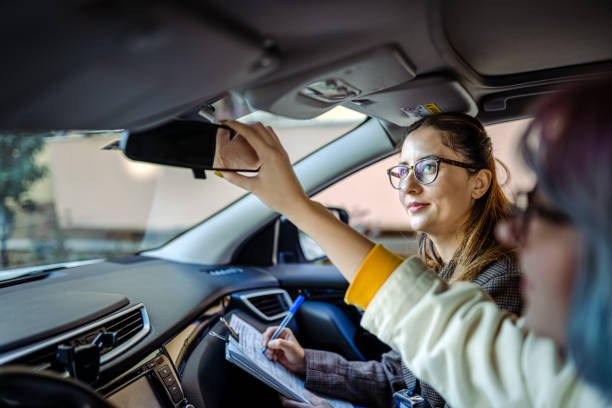Car accidents can be stressful, confusing, and overwhelming. But knowing the right steps to take immediately after an accident can make a huge difference, not only for your safety but also for a smooth and hassle-free insurance claim.
This comprehensive step-by-step guide covers everything you need to do right after a car accident, from ensuring safety at the scene to filing your insurance claim and getting your car repaired. Whether it’s a minor fender-bender or a major collision, this guide will help you navigate the process confidently.
1. Ensure Safety First: Check Yourself and Others
Prioritize Health and Safety
- Check yourself and passengers for injuries.
- If safe, check the condition of others involved (drivers, passengers, pedestrians).
- Call emergency services immediately if there are serious injuries.
Move to a Safe Location
- If the accident is minor and vehicles are drivable, move to the side of the road or a safe spot.
- Turn on hazard lights to warn other drivers.
- Avoid blocking traffic or putting yourself at risk.
2. Document the Accident Scene Thoroughly
Why Documentation Matters
Insurance companies rely heavily on evidence when assessing claims. Detailed documentation can speed up your claim and protect you from liability.
What to Document
- Take clear photos of all vehicles involved (front, rear, sides, damages).
- Capture the accident location, skid marks, road signs, and traffic signals.
- Photograph any visible injuries (if comfortable).
- Note down the exact time, date, and weather conditions.
Exchange Information with Other Drivers
- Names, addresses, phone numbers
- Vehicle registration numbers
- Insurance company names and policy numbers
- Driver’s license details
Collect Witness Contacts
- If possible, get contact details of witnesses to support your case.
3. Notify the Police and File an FIR (If Required)
When to Involve the Police
- If there is injury, death, or major property damage.
- If the other party flees or is uncooperative.
- If the accident involves government property or public vehicles.
Filing the FIR
- Visit the nearest police station to file an official report.
- Provide all details and documentation.
- Keep a copy of the FIR—insurance companies often require it.
4. Inform Your Insurance Company Promptly
Report the Accident Immediately
- Call your insurer’s 24/7 helpline or report online.
- Provide accurate details about the accident and damages.
- Submit photos and documentation as requested.
Understand Your Policy Terms
- Ask about the claim process, required documents, and timelines.
- Check if you have add-ons like cashless repair or towing assistance.
5. Get Your Vehicle Assessed and Repair Process Started
Choose Between Cashless and Reimbursement Claims
- Cashless claims: Use insurer’s network garages; insurer settles costs directly.
- Reimbursement claims: Pay for repairs yourself, then claim reimbursement.
Vehicle Inspection
- Insurer may send an assessor to verify damages.
- Provide all required documents and cooperate fully.
Repair Process
- Authorize repairs once approved.
- Keep repair bills and invoices safe for future reference.
6. Follow Up on Your Insurance Claim Regularly
Stay in Touch with the Insurer
- After filing your claim, maintain regular contact with your insurance company.
- Check the status of your claim through their website, app, or customer service.
- Provide any additional documents promptly if requested.
Track Claim Settlement Timeline
- Most claims settle within 15 to 30 days if documents are complete.
- Delays can occur if there are disputes or missing paperwork.
- Ask for clear timelines and escalate if necessary.
7. Handling Disputes and Claim Rejections
Common Reasons for Claim Rejection
- Late reporting of the accident.
- Non-disclosure or misrepresentation of facts.
- Driving under influence or without a valid license.
- Use of vehicle for unauthorized purposes.
- Policy lapses or non-payment of premiums.
What to Do If Your Claim Is Rejected
- Request a written explanation from the insurer.
- Review your policy terms and documents carefully.
- You may escalate the issue to the insurance ombudsman or consumer court.
- Seek legal advice if necessary.
8. Tips to Speed Up Your Car Insurance Claim Process
1. Keep All Documents Ready
- Policy documents, driving license, registration, FIR, medical reports (if any), repair bills, and photographs.
2. Report the Claim Quickly
- Inform your insurer as soon as possible to avoid penalties or rejection.
3. Use Cashless Garages
- Choosing a network garage can simplify repair approvals and payment processes.
4. Be Honest and Accurate
- Provide clear and truthful information to avoid delays.
5. Follow Up and Keep Records
- Maintain copies of all communication and receipts.
9. Common Mistakes to Avoid After an Accident
❌ Not Checking for Injuries
- Always prioritize health and call for medical help if needed.
❌ Failing to Document the Scene
- Lack of evidence can complicate claims and liability assessment.
❌ Ignoring Police Procedures
- Skipping FIR or police reports can lead to claim denial.
❌ Delaying Informing the Insurer
- Late intimation often results in rejection.
❌ Settling Without Insurer’s Consent
- Don’t agree to repairs or settlements before insurer approval.
10. When to Consider Hiring a Claims Consultant or Lawyer
If your claim is large, complex, or disputed, professional help can make a difference:
- Claims consultants can negotiate with insurers on your behalf.
- Lawyers can guide legal action if you face wrongful claim denial or delays.
Conclusion
Accidents are unfortunate, but your response can prevent further stress. By following these steps carefully, from ensuring safety, documenting the scene, involving authorities, to timely and accurate insurance claim filing, you set yourself up for a smoother process and fair compensation.
Remember, knowledge is your best tool. Keep this guide handy, and drive safely!





